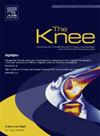神经肌肉训练对青少年和年轻运动员下肢运动损伤的预防作用:系统回顾和荟萃分析
IF 2
4区 医学
Q3 ORTHOPEDICS
引用次数: 0
摘要
经常从事体育运动的青少年和年轻运动员面临着下肢损伤的高风险。神经肌肉训练(NMT)已被证明可以有效地减少这一人群的运动相关损伤发生率。然而,NMT的干预效果受到不同因素的影响而有所不同。本荟萃分析旨在确定NMT对各种类型下肢损伤的预防作用,并研究年龄、性别、训练时间、训练频率和干预时间这五个调节因素对NMT项目质量的影响。方法于2024年11月对Web of Science、PubMed、Scopus、Cochrane Library和PEDro数据库进行系统检索,检索策略为:(Neuromuscular Training OR NMT)和(Sport Injury OR Injury Prevention)。符合条件的研究符合以下标准:1)评估的NMT项目;2)报告明确的参与者平均年龄或年龄范围;3)采用随机对照试验(RCTs)设计;4)提供详细的原始数据;5)纳入全面的损伤数据。两名评论者独立提取数据并评估研究质量。进行荟萃分析,汇总下肢损伤的发生率比(rr),并分析调节因素的影响。结果纳入的24项研究的数据表明,NMT使下肢损伤的总体风险降低了27% (0.73,95% CI 0.67-0.79)。根据损伤类型进行亚组分析,得出以下rr:混合下肢损伤(0.72,95% CI 0.63-0.83)、膝关节损伤(0.72,95% CI 0.62-0.84)和踝关节损伤(0.73,95% CI 0.63-0.84)。综合调节分析显示,NMT项目对12-18岁的男性和青少年的膝关节损伤具有最佳的预防效果。在训练剂量方面,每次训练20-30分钟,每周1-2次,干预期超过6个月,可以最大程度地降低风险。结论每次20-30分钟,每周1-2次,干预期≥6个月的nmt方案对预防12-18岁男性青少年膝关节损伤最有效。本文章由计算机程序翻译,如有差异,请以英文原文为准。
The preventive effects of neuromuscular training on lower extremity sports injuries in adolescent and young athletes: a systematic review and meta-analysis
Background
Adolescents and young athletes who frequently engage in sports face a high risk of lower extremity injuries. Neuromuscular training (NMT) has been shown to effectively reduce sports-related injury incidence in this population. However, the intervention efficacy of NMT varies under the influence of different factors. This meta-analysis aimed to determine the preventive effects of NMT on various types of lower extremity injuries and investigate the impact of five moderating factors—Age, Sex, Training Duration, Training Frequency, and Intervention Period—on NMT program quality.
Methods
A systematic search of Web of Science, PubMed, Scopus, Cochrane Library, and PEDro databases was conducted in November 2024 using the search strategy: (Neuromuscular Training OR NMT) AND (Sport Injury OR Injury Prevention). Eligible studies met the following criteria: 1) evaluated NMT programs; 2) reported clear mean age or age range of participants; 3) employed a randomized controlled trial (RCTs) design; 4) provided detailed raw data; and 5) included comprehensive injury data. Two reviewers independently extracted data and assessed study quality. Meta-analyses were performed to pool rate ratios (RRs) for lower extremity injuries and analyze the effects of moderating factors.
Results
Data from 24 included studies demonstrated that NMT reduced the overall risk of lower extremity injuries by 27 % (0.73, 95 % CI 0.67–0.79). Subgroup analyses by injury type yielded the following RRs: mixed lower extremity injuries (0.72, 95 % CI 0.63–0.83), knee injuries (0.72, 95 % CI 0.62–0.84), and ankle injuries (0.73, 95 % CI 0.63–0.84). Comprehensive moderator analyses revealed that NMT programs exhibited optimal preventive effects for knee injuries, males, and adolescents aged 12–18 years. Regarding training dosage, the greatest risk reduction was observed with programs involving 20–30 min per session, 1–2 sessions per week, and an intervention period exceeding 6 months.
Conclusion
NMT programs involving 20–30 min per session, 1–2 weekly sessions, and an intervention period of ≥ 6 months are most effective in preventing knee injuries among male adolescents aged 12–18 years.
求助全文
通过发布文献求助,成功后即可免费获取论文全文。
去求助
来源期刊

Knee
医学-外科
CiteScore
3.80
自引率
5.30%
发文量
171
审稿时长
6 months
期刊介绍:
The Knee is an international journal publishing studies on the clinical treatment and fundamental biomechanical characteristics of this joint. The aim of the journal is to provide a vehicle relevant to surgeons, biomedical engineers, imaging specialists, materials scientists, rehabilitation personnel and all those with an interest in the knee.
The topics covered include, but are not limited to:
• Anatomy, physiology, morphology and biochemistry;
• Biomechanical studies;
• Advances in the development of prosthetic, orthotic and augmentation devices;
• Imaging and diagnostic techniques;
• Pathology;
• Trauma;
• Surgery;
• Rehabilitation.
 求助内容:
求助内容: 应助结果提醒方式:
应助结果提醒方式:


